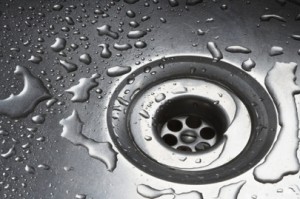DRAINS
Nothing is worse than when you’re in a hurry to leave home, and you realize your drain is clogged. It is always ideal to be alert and notice the signs of a slow drain before it actually gets clogged. It’s easier to open a drain that’s slowing down then one which is already clogged all the way.
Here are a few tips on how you can prevent this.
Assessing Your Drain:
-
Run or pour scalding water down the drain. This will help break up grease buildups that may be clogging the lines.
- If hot water doesn’t unclog the drain, there could be some object in the drain causing the clog.
- How can you check? Remove and thoroughly clean the sink pop-up stopper or strainer.
- Determine if the clog is close to the sink by checking the other drains in your home. (If more than one won’t clear, something is stuck in the main drain.)
- The most effective way to clear a clog is with a snake. It’s the fastest way to get the unwanted object(s) out!
- You can also try using a plunger or a chemical drain.
Clearing Drains with a Plunger
The plunger is always a good drain-clearing tool, but it often fails to work because it’s incorrectly used. Here are a few tips to guide you:
- Choose a plunger with a suction cup large enough to cover the drain opening completely.
- Fill the clogged fixture with enough water to cover the plunger cup.
- Coat the rim of the plunger cup with petroleum jelly to ensure a tight seal. (Great technique!)
- Block off all other outlets (the overflow, second drain in a double sink, adjacent fixtures) with wet rags.
- Insert the plunger into the water at an angle so no air remains trapped under it. (Very important to keep air out.)
- Use 15 to 20 forceful strokes, holding the plunger upright and pumping vigorously.
- Repeat the plunging two or three times before giving up.
Using Chemical Drain Cleaners
Though routine use of chemical drain cleaners to prevent clogs may eventually damage your pipes if used too much. However, if water is draining somewhat, but plunging has failed to open the drain completely, you may want to try using a drain cleaner.
Whenever you use chemicals, always be very cautious and be sure to be in a well-ventilated room. Here are some precautions you should be sure to take when using chemicals.
Important Safety Tips:
- Never use a plunger if a chemical cleaner is present in the drain; you risk splashing caustic water on yourself.
- Always wear rubber gloves to prevent the chemical from burning your skin.
- Do not use a chemical cleaner if the blockage is total, especially if the fixture is filled with water. It won’t clear the blockage and you’ll face another problem-how to get rid of the caustic water.
- Never use a chemical cleaner in a garbage disposal.
- Always read labels and match cleaners with clogs.
Alkalis cut grease; acids dissolve soap and hair. - Do NOT mix chemicals. Mixing an acid and an alkali cleaner can cause an explosion.
- Do NOT look down the drain after pouring a chemical. The solution often boils up and gives off toxic fumes.
If these remedies don’t help, visit the scheduling section of our website to schedule a service call, or you may call us at (405)-364-1001 and we will be glad to help with all your plumbing needs!
Be sure to Like us on FaceBook for future plumbing tips!




